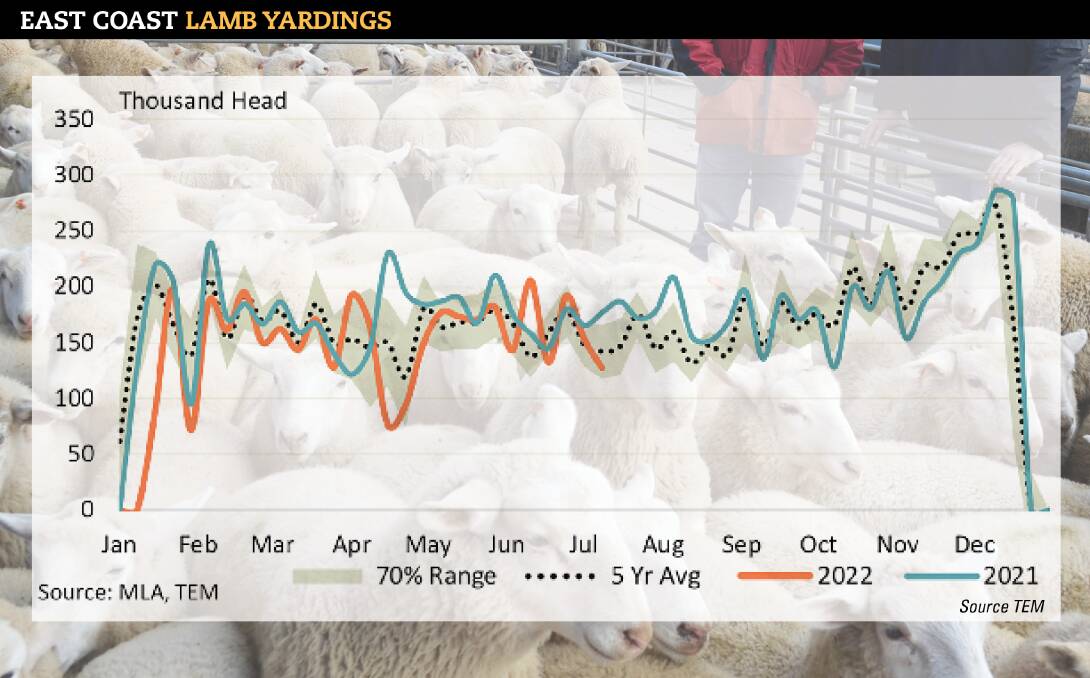
Lamb prices have rallied as a sudden squeeze in supply resulted in some stiff competition in the saleyards.
Subscribe now for unlimited access to all our agricultural news
across the nation
or signup to continue reading
Industry analysts are reporting the continuation of cold, wet conditions have influenced producers, in particular Victorian producers, to hold stock back as lambs fail to finish strongly.
Sheep yardings last week plummeted 44pc overall, driven by a 46pc reduction in NSW and 40pc in Victoria.
"Softer pricing as well as the wet conditions that saw sheep producers shun the saleyards across the eastern states last week," Thomas Elder Markets (TEM) analyst Matt Dalgleish said.
"East coast lamb and sheep yarding mirrored the decline seen in cattle volumes, with lamb yardings down by 17 per cent and sheep volumes off by 43pc," Mr Dalgleish said.
"East coast sheep yardings slumped to just 25,915 head for the week ending July 8, which is lower volumes presented than during the Easter holiday period."
Current east coast sheep yarding levels are running 45pc under the five-year average for this week in the season.
Meanwhile, east coast lamb yardings are running 10pc under the five-year average for this week in the year at 127,067 head.
Most key indicators experienced solid price increases, with the Eastern States Trade Lamb Indicator (ESTLI) recovering 4.2pc for the week, and the National Mutton Indicator up 6.2pc.
Forbes saleyards in NSW traded at a 91c premium on the national average of 732.34c/kg cwt, representing an increase of 50c week-on-week.
ALSO READ:
The ease in mutton numbers was demand driven, as it was known in the markets that Fletchers in VIC, which is reportedly one of Australia's largest mutton exporters, is in winter shutdown and maintenance mode, consequently absent from the markets.
Merino lamb prices also strengthened 64c week-on-week to reach 712.9c/kg cwt.
And it was again Forbes that traded at a 130c premium on the national average, contributing 19pc.
Wagga Wagga in NSW's Riverina was the only sale yard that contributed more, at 23pc and traded 29c above the national average.
NLRS commentary from the larger selling centres of Bendigo, Ballarat, and Wagga Wagga suggest that offerings are still of mixed quality, with some producers clearing out poorly performing winter stock that lack finish.
However, demand for quality remains the focus.
And if the trend towards low yardings continues it could present an opportunity for producers to take advantage of the bounce in prices, even if it is only temporary due to the sudden squeeze in supply.


